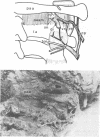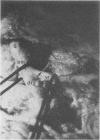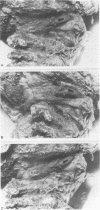Abstract
The C2 nerve roots and rami were dissected in five cadavers to explore the pathogenesis of Neck-Tongue Syndrome. The most likely cause of the simultaneous occurrence of suboccipital pain and ipsilateral numbness of the tongue is an abnormal subluxation of one lateral atlanto-axial joint with impaction of the C2 ventral ramus against the subluxated articular processes.
Full text
PDF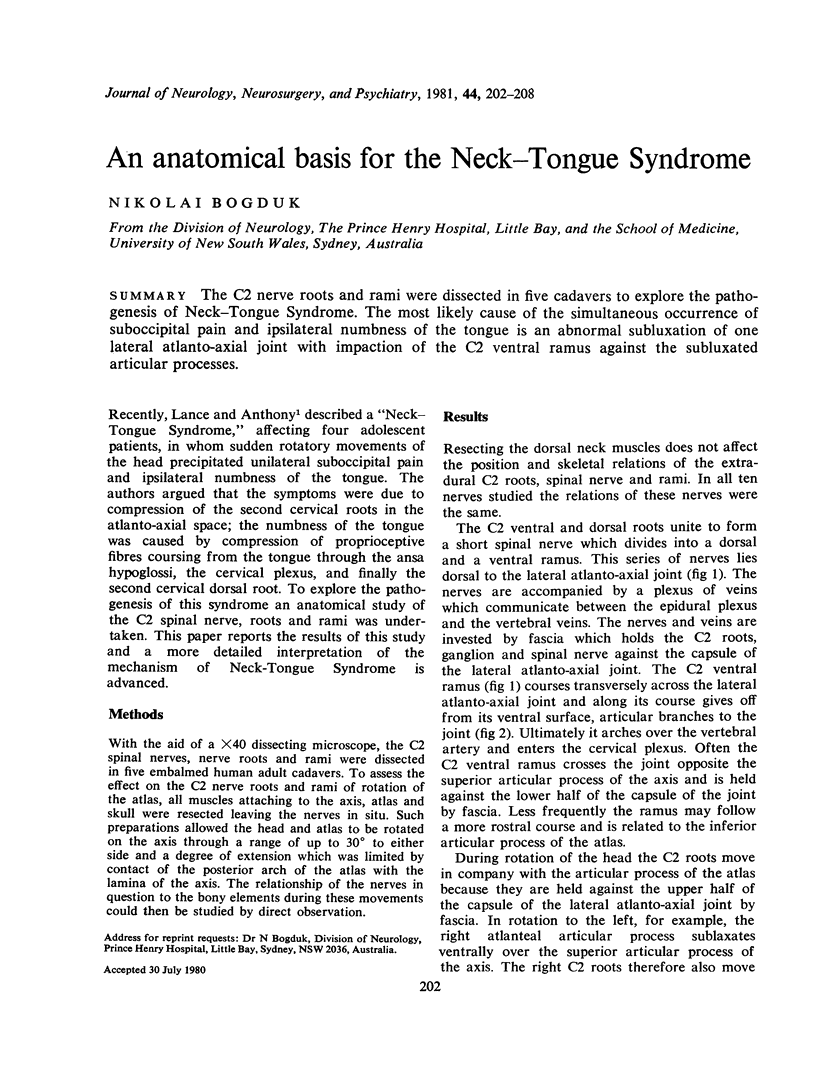
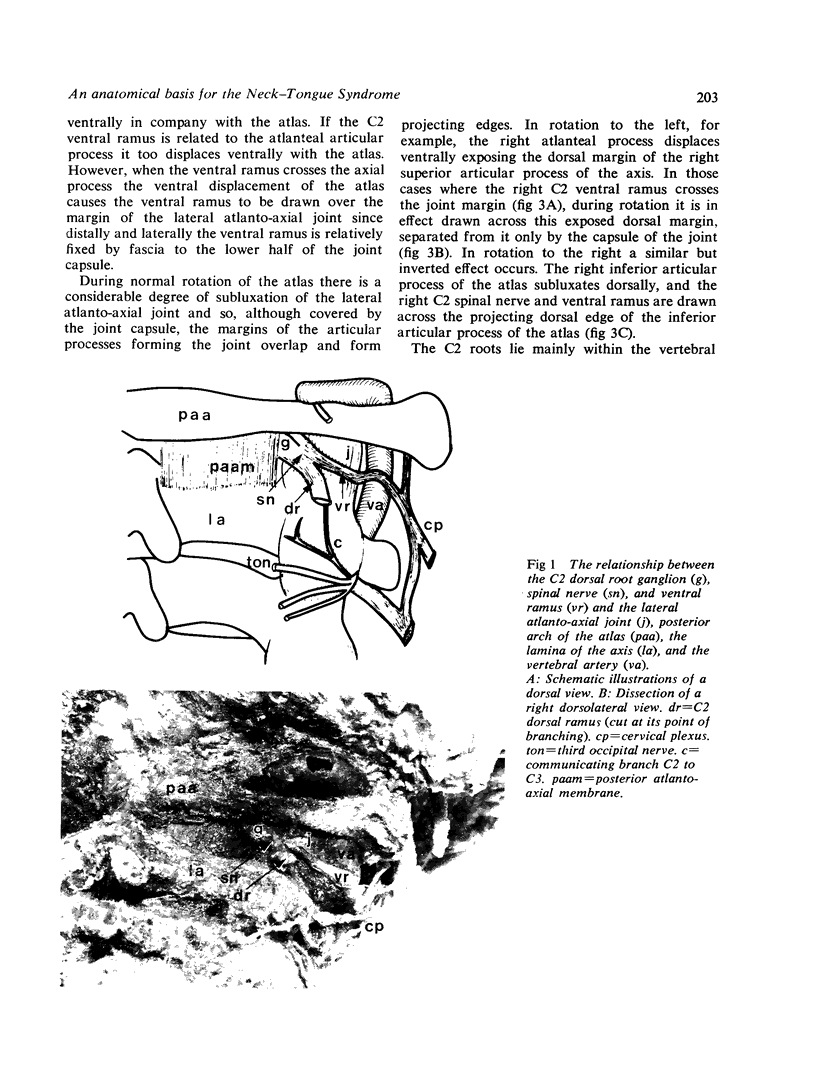
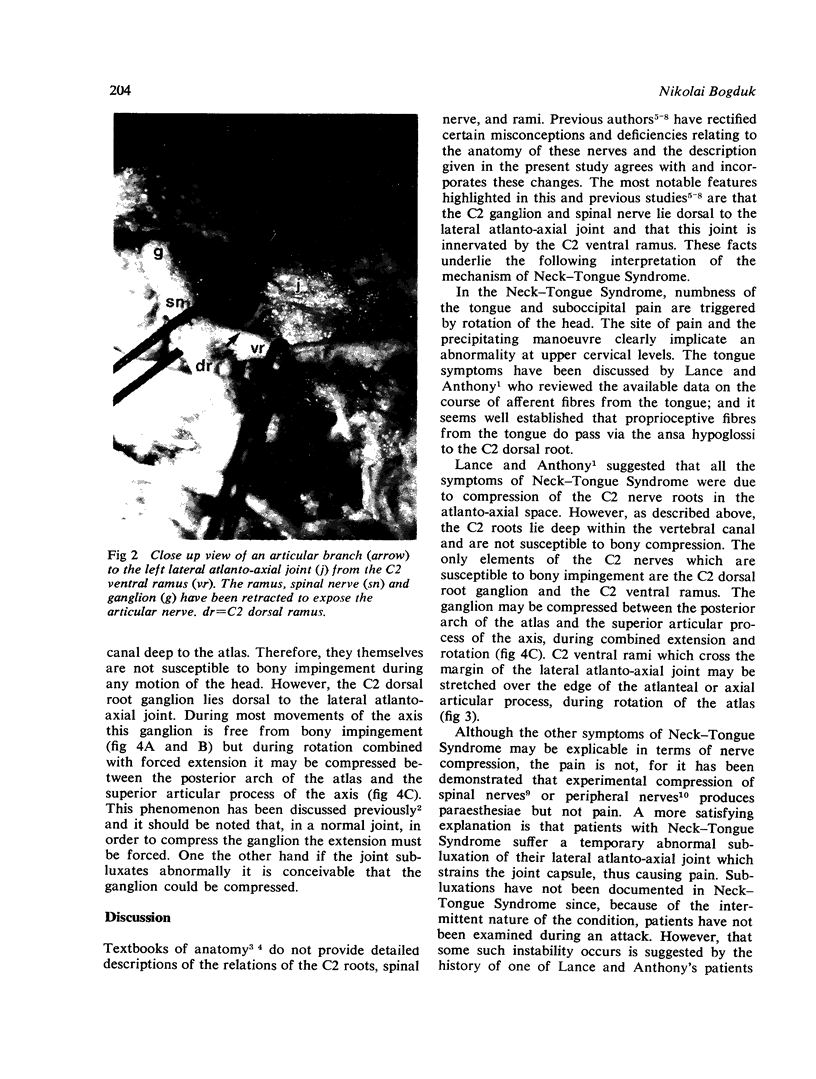
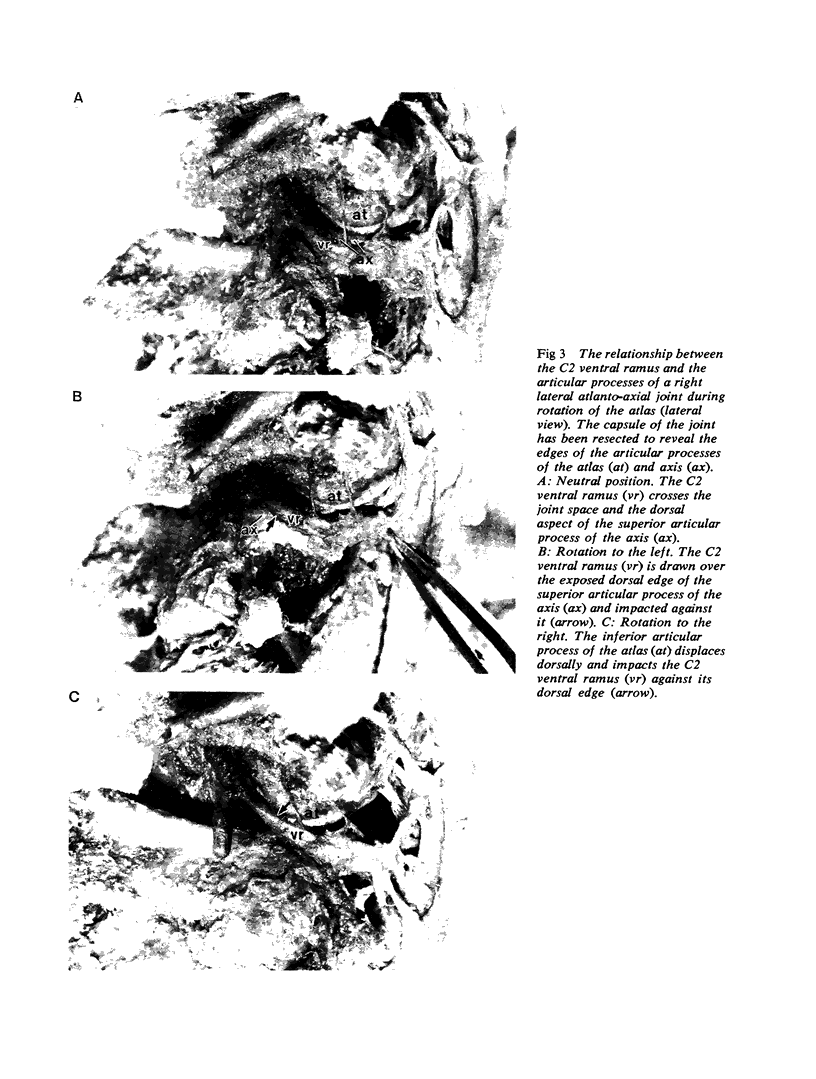
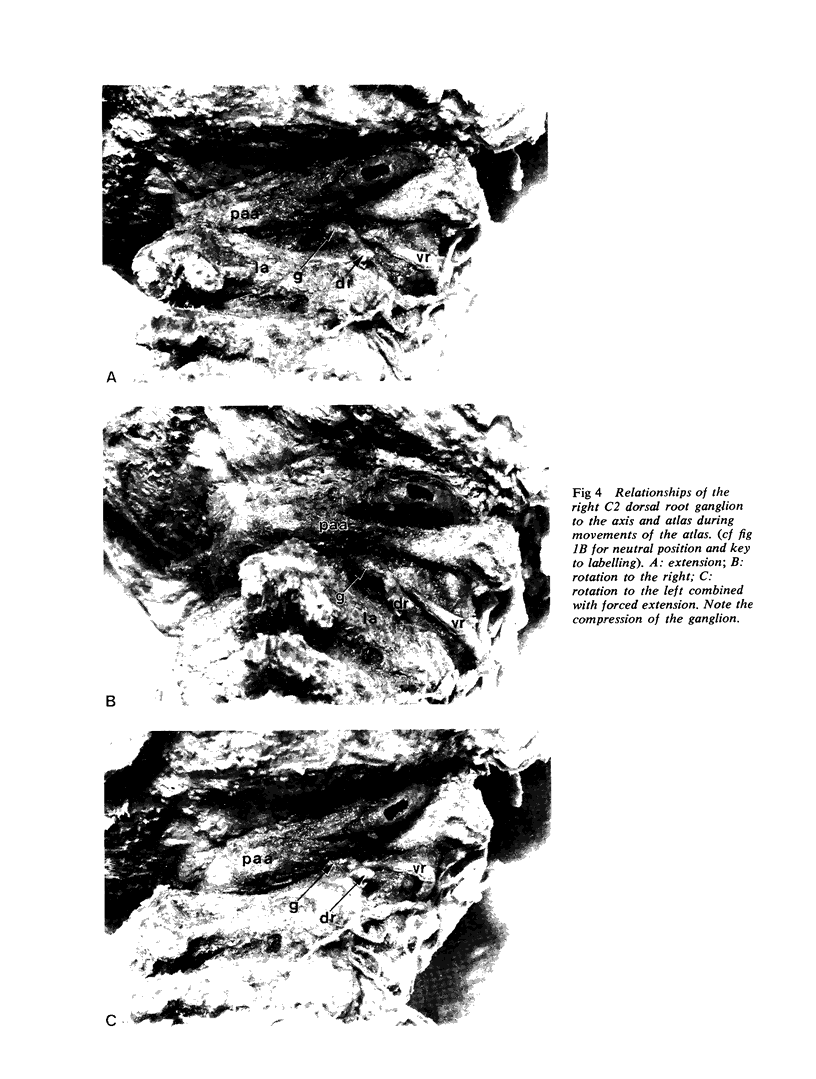
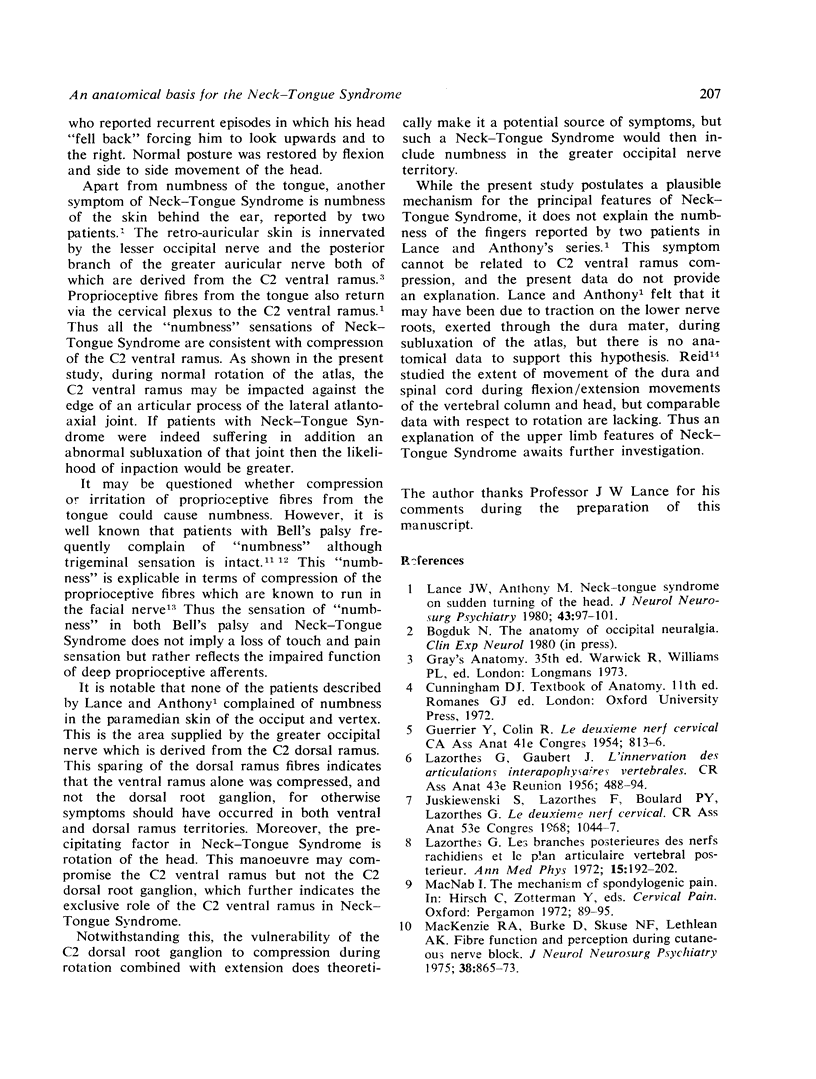
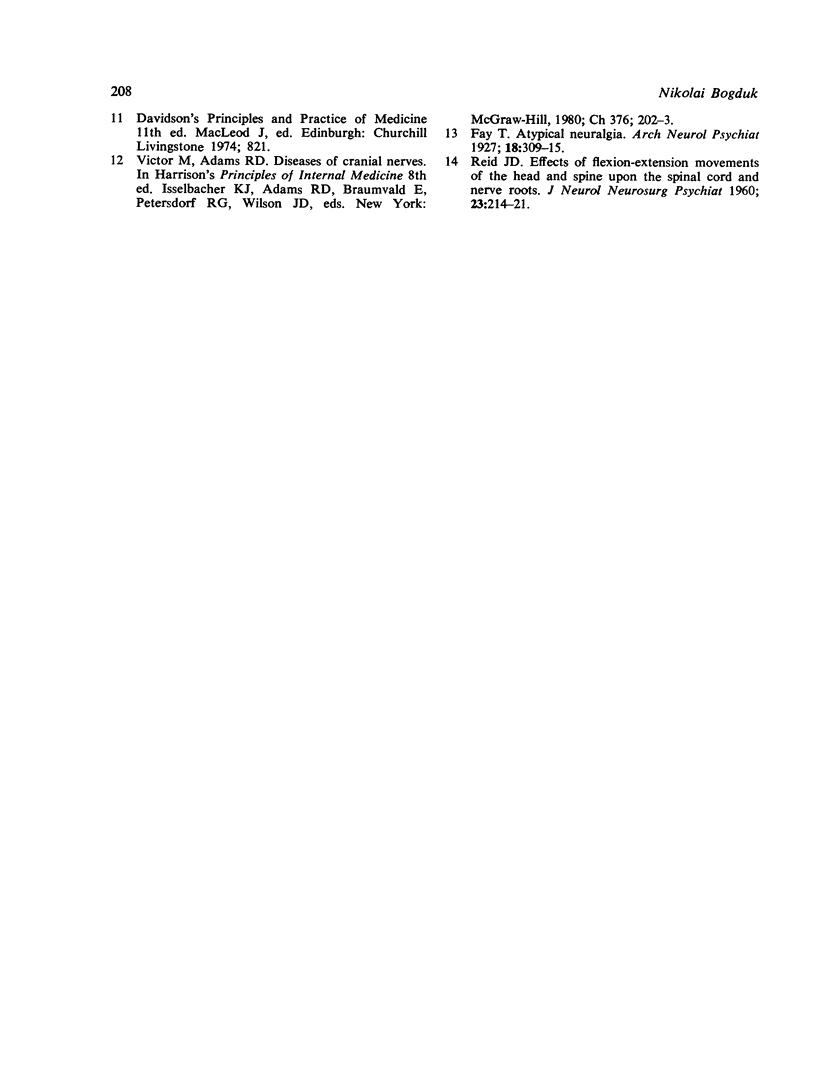
Images in this article
Selected References
These references are in PubMed. This may not be the complete list of references from this article.
- Lance J. W., Anthony M. Neck-tongue syndrome on sudden turning of the head. J Neurol Neurosurg Psychiatry. 1980 Feb;43(2):97–101. doi: 10.1136/jnnp.43.2.97. [DOI] [PMC free article] [PubMed] [Google Scholar]
- Mackenzie R. A., Burke D., Skuse N. F., Lethlean A. K. Fibre function and perception during cutaneous nerve block. J Neurol Neurosurg Psychiatry. 1975 Sep;38(9):865–873. doi: 10.1136/jnnp.38.9.865. [DOI] [PMC free article] [PubMed] [Google Scholar]
- REID J. D. Effects of flexion-extension movements of the head and spine upon the spinal cord and nerve roots. J Neurol Neurosurg Psychiatry. 1960 Aug;23:214–221. doi: 10.1136/jnnp.23.3.214. [DOI] [PMC free article] [PubMed] [Google Scholar]



